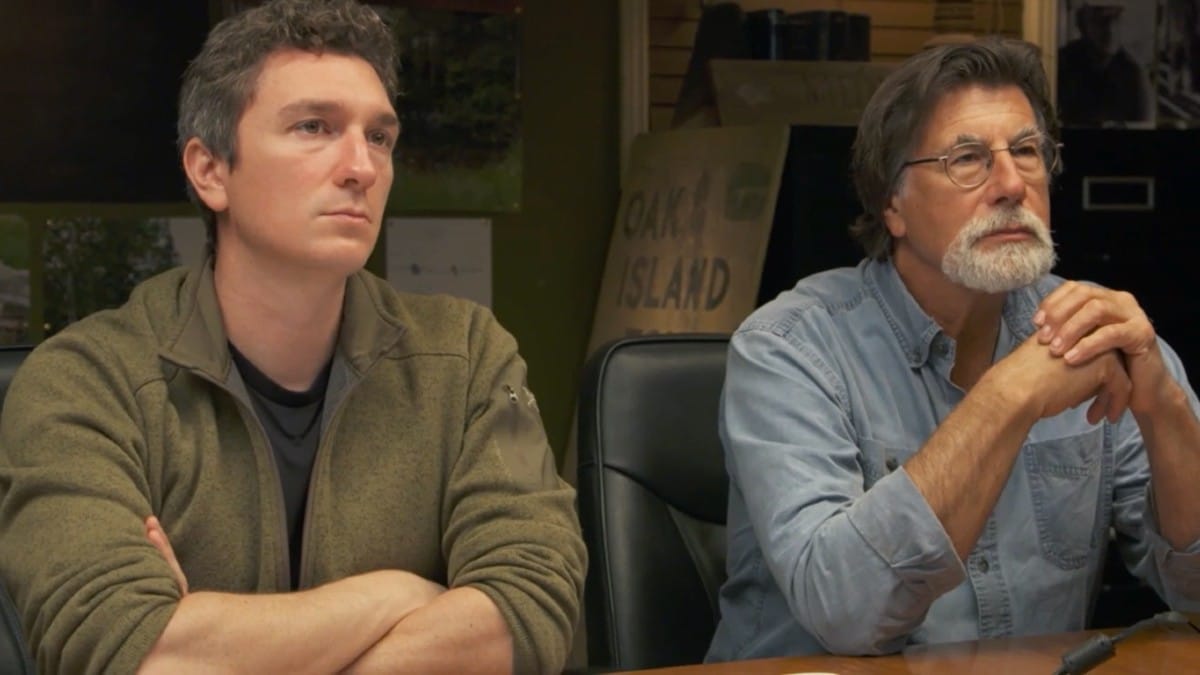
This week The Curse of Oak Island was all about finding out who is responsible for burying the treasure on the island and thereby creating the whole mystery. Historian Doug Crowell has been doing some extra work on the side, and he reckons that the ancient Portuguese are the ones to blame/applaud for what happened on the island.
The Oak Island team has spent quite a lot of time researching the “who” of this mystery, and there have been some wide-ranging theories over who might have buried the treasure from medieval Templar Knights to Spanish Conquistadores. There has also been a lot of study into the role the French and English may have played.
However, the evidence suggesting that 15th to 16th-century Portuguese sailors may have spent a long time on the island is really starting to mount up.
Last November, the team spoke to historian Terry Deveau who pointed out that the mysterious stone roadway emanating from the swamp is very similar to the types of roads that the Portuguese were building in the 1500s.
In the same month, metal detectorist Gary Drayton stumbled upon a gun stone, the second one found on the island in two years. These gun stones are essentially mini cannonballs that could be fired from mini cannons mounted on the deck of ships.
An expert analysis revealed that the stones likely came from either the Canary Islands or the Azores, the latter is a Portuguese territory. Last night, Doug revealed that the Portuguese were probably the first to use these types of cannons.
And recent analysis of gold shards found in the Money Pit area has suggested that the gold might have come from South America, where the Portuguese (and Spanish) had a vast empire.
Historians believe Portuguese regularly visited Nova Scotia and Oak Island
Doug also told the team gathered in the War Room that from about 1500 to 1600, the Portuguese had regularly visited and explored the Nova Scotia coast. Laird Niven chimed up to say he was convinced the Portuguese had been coming to NS for years, mostly to fish.
Doug then told the guys of research done in the 1970s that argues that Portuguese sailors shipped large amounts of gold from South America back to Portugal in the 15 and 16th centuries. The sailors’ route took them northwards before they would turn east at the Azores and head for home; however, vicious storm fronts would often hit the Azores, forcing the ships to veer westwards instead and take refuge in Nova Scotia.

What’s more, Doug has located maps from the 1500s which appear to mark Mahone Bay (where Oak Island is located) as a “bay of refuge.”
If Portuguese sailors had come to know the coast of Nova Scotia through regular visits, it’s certainly feasible that someone identified Oak Island as the perfect place to hide treasure. It could have been the work of a rogue captain, or maybe they were working under the orders of the King of Portugal.
More disappointment at the Oak Island Money Pit
This episode was heavy on the discussion and theory side of things, and there wasn’t really much to get excited about in the way of finds. The guys did unearth a few artifacts in the swamp which they suspected were nautical in origin, but nothing was confirmed as yet. We’ll have to wait for a proper analysis.
There was also a bit of disappointment at the Money Pit. The guys moved the borehole drill in the hope of hitting the elusive tunnel that is supposed to extend from shaft 6 to the treasure chamber, but unfortunately, the drill failed to make contact. Fingers remain crossed for next week.
The Curse of Oak Island airs at 9/8c on History.
When the slip way was found in Smiths Cove, I immediately thought about ship’s repair. Since there are no oaks on Oak Island, is it possible they were cut down to repair the supposed Portuguese treasure fleet diverted from the storm off the Azores? Another thought is since gold was found on the mainland of Nova Scotia not far from Oak Island, is it possible instead of the Portuguese stashing treasure on Oak Island, they may have been mining there? The stone road indicated a lot of heavy movement in or possibly out. Research the possibility the Portuguese were active miners during the time period of the carbon dated ship’s pieces found in the swamp. Thinking outside the box, away from treasure caches may lead to the answers Rick Lagina is looking for.
It looks to me Like a group of ship’s got beat up badly by storms or hurricane. They limped into oak island and found that between the two islands they could fit a ship between them to repair. They repaired the ships at oak island and decided to bury the treasure for safe keeping. One so badly damaged from storm or slaving parts off of it so it would not sail anymore so they burned it up and made the swamp to hid the remains They may have worried about not having enough fire power left to risk taking it home. Maybe on trip home they had bad weather and sunk?
Would like to know y you have not tested the swamp for silver like you did at the money pit come on test it there silver on the ship the hid there and why they dont use the rods to find the tunnels full of water in the money pit like they did in the old days to find water flag it out and you will see the tunnels